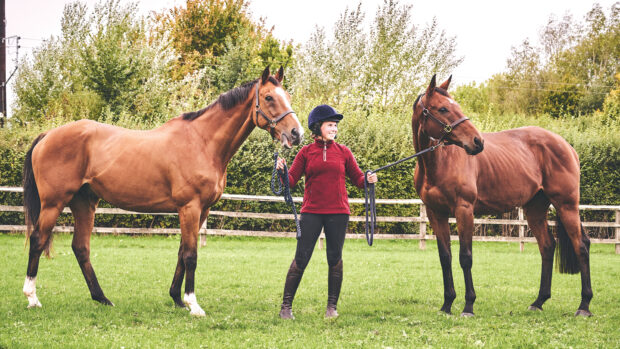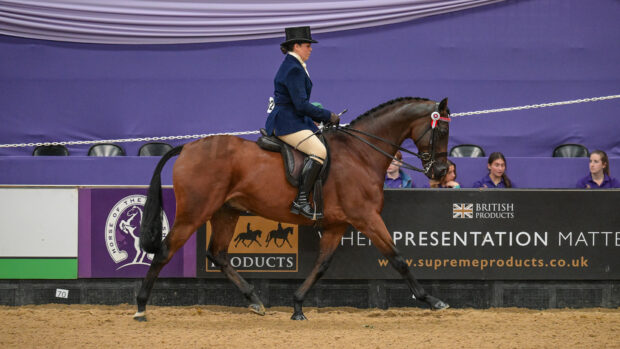British racing has been able to account for thousands of horses who were previously unrecorded, thanks to its milestone first thoroughbred census.
The uptake and findings from the 2023 census present huge possibilities for education, traceability and ultimately improving lives for both former racehorses and the wider UK herd, its creators believe.
Details of 8,256 former racehorses were submitted – 5,566 of whom were previously unrecorded.
Hartpury University carried out the census in partnership with the industry’s Horse Welfare Board, funded by The Racing Foundation. They combined the findings with information from the 13,000 Retraining of Racehorses (RoR) members, plus data from equestrian associations.
The researchers have calculated the number of former racehorses in Britain to be around 33,600, which means the “intelligence bank” now covers around 80.1% of the estimated population.
“We now understand more about the knowledge, understanding and the decisions owners make,” Hartpury’s head of research and associate professor Jane Williams told H&H, adding that the findings give “real opportunities for education and influence”.
“Like most of these things, it’s led to more questions, but it’s a really good line in the sand.”
She added: “I think it’s potentially a game-changer in terms of where we are and how we should look at monitoring horses’ information. I’m a really strong believer in evidence-informed decision-making, and we can’t do that if we don’t understand the state of play.
“What this does is enables us to see the state of play and to be able to understand what is happening with these horses, why people are engaging or not with passport compliance – and we needed that knowledge.”
Analysis of the data means that Hartpury has been able to create a “heat map” to show the population density of former racehorses across Britain, understand more about the age spread, the range of activities they are involved in and how many owners thoroughbreds typically have during their lifetimes.
They found a strong link between owners having had a thoroughbred previously, showing a “trend for people to really engage with the breed”.
More than a third of the horses were still with their original post-racing owner, and the majority (87.3%) of former racehorses had been owned by three or fewer owners.
Dr Williams said this suggests a different, more positive picture to the preconception that horses are turned over “quite often”.
The numbers show 6% of horses were under the age of four, 63% were between the ages of five and 14, 31% were 15 years old and over, with a spike in the mid-twenties.
“Again, it gives us an insight into maybe where some of the education can go, and where some of the resources across RoR and other organisations might be well placed to support some of these owners and horses,” she said.
One of the key gaps this has highlighted, she added, is that people often did not know much about their horses’ previous history and there could be scope to help improve that.
There also appears to be a gap in owners’ understanding of their responsibility to keep every horse’s ID document up to date.
Reasons for horses coming out of racing were “not a surprise”; these mainly included lack of speed, poor performance, injury, horses losing their love for racing, and retirement owing to age or it being an appropriate time.
“What the real positive for me that comes out of this is that there was a clear recognition for why these horses were not in racing any longer,” Dr Williams said.
“People are considering what is best for the horse, what is the most appropriate fit, whether they can optimise the horse’s good life by pushing him into a different sphere, and recognising it was time to call a close on the first stage of their career.
“The breadth of ages that we see as well is positive – it’s not necessarily that they are an old horse, but it’s all ages, and people are really putting the horse first.”
World Horse Welfare chief executive Roly Owers said that it is “encouraging to see the positive strides in intelligence made as a result of the census, as well as the industry’s commitment to achieving complete traceability in the future”.
The Horse Welfare Board is collaborating with RoR to move forwards addressing areas informed by these findings, and is planning to repeat the census in three to five years.
Recommendations including the need to develop a mechanism to ensure 100% of horses can be traced at the first step out of racing were also raised. The aim is to link the sport’s national racing administration system data with the RoR database, so all thoroughbreds leaving racing, and their new owners, are automatically enrolled with RoR.
It also brought into focus the need for digital equine ID – and also for further development of the Central Equine Database to successfully operate as a repository for data on all thoroughbreds throughout their lives. Work to lobby the Government in these areas will continue.
Dr Neil Hudson, equine vet and MP, said the census is a “very welcome and crucial step in closing the gap in traceability”.
“It is vital that the Government continues to work with the racing industry to implement important initiatives that will improve the welfare of all thoroughbreds, both during racing and once they leave the sport,” he said.
You might also be interested in:

Subscribe to Horse & Hound magazine today – and enjoy unlimited website access all year round

Tina Cook’s five golden nuggets of advice for retraining racehorses

‘Ensuring no horse ever faces an uncertain future’: new plans for former racehorses unveiled
Horse & Hound magazine, out every Thursday, is packed with all the latest news and reports, as well as interviews, specials, nostalgia, vet and training advice. Find how you can enjoy the magazine delivered to your door every week, plus options to upgrade your subscription to access our online service that brings you breaking news and reports as well as other benefits.




